VOL- 4, ISSUE- 4, PUNE RESEARCH TIMES (ISSN 2456-0960) JIF 3.18
4.4 TIMES
Area of Article : ALL
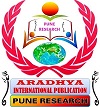
VOL- 4, ISSUE- 4, PUNE RESEARCH TIMES (ISSN 2456-0960) JIF 3.18
4.4 TIMES

VOL- 4, ISSUE- 4, PUNE RESEARCH TIMES (ISSN 2456-0960) JIF 3.18
4.4.1 TIMES
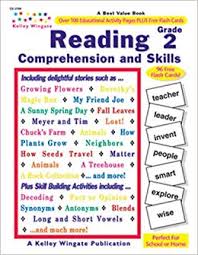
This piece of writing discusses
significance of vocabulary size in relation with the performance-level of
reading comprehension. It also touches
upon different types of vocabulary lists, to boost up the size of the learners’
needed/graded vocabulary. This article
also accommodates some blueprints to discuss the interplay between vocabulary
and reading comprehension, to bring it to the notice of the
teaching-practitioners. The article culminates with the message that there is a
strong bond between word-hoard and comprehending a reading-text.
Key Words: Vocabulary
size -- reading comprehension -- lexical thresholds -- classification of
vocabulary lists -- blueprints to connect corpora with reading texts.
VOL- 4, ISSUE- 4, PUNE RESEARCH TIMES (ISSN 2456-0960) JIF 3.18
4.4.2 TIMES
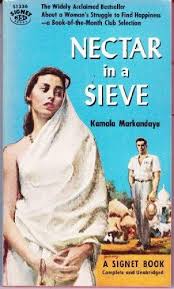
Kamala Markandaya’s novel Nectar in a Sieve is
a realistic documentary of a South Indian village where industry and modern
technology played havoc. In the novel the novelist depicts the life of the
rustic peasant couple Nathan and Rukmani, the protagonists, and through them
the process of transforming life-style of the village at the advent of
industrialization. The prime focus in the novel seems to be on the conflict
arising out of the establishment of tannery in the rural community, the
identity crisis resulting from a clash between western value system and Indian
value system. Tannery, the juggernaut of development, with all its evils,
pollution and corruption, represent the western value system of materialism and
agro-industrialism, while the idyllic rural life stands for Indian value system.
VOL- 4, ISSUE- 4, PUNE RESEARCH TIMES (ISSN 2456-0960) JIF 3.18
4.4.3 TIMES

Education is an endless and constant process. It is really
satisfied thing that the govt., parents as well as students are becoming more
conscious about education and educational policies. To make an ideal generation
is one of the main objectives of education. No-one should underestimate the
importance of education in human life. After getting freedom, due to the
limitations, old education system which was formed and framed by Lord Macaulay,
Indian Govt. had to continue. Many times it is criticized harshly that present
education system adopted by Indians is not Indian Education system. It is not
100% wrong. Of course as per the demand of time and period we change it. But
compare with old changes, standing govt. is taking one step-ahead decisions
related with education. Yes the challenges have changed and education system
must be able to make our students stronger to face it. When we observe some
decisions of HRD Ministry then it is assured that education is being made more
students centred and skills oriented. In fact it will be helpful to empower and
enhance the abilities of students. Present research paper has tried to study
and analyze the different policies of government related to higher education
which will empower the students.
Key-words: Empowerment, Education, Educational
Policies, Students.
VOL- 4, ISSUE- 4, PUNE RESEARCH TIMES (ISSN 2456-0960) JIF 3.18
4.4.4 TIMES
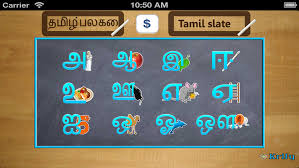
The linguistic stage involves the encoding of auditory
and visual information into syntactical-lexical units the symbols for letters
and written words. This is mediated through the angular gyrus which thus
provides the linguistic rules which subserve writing. The motor stage is the final
step in which the expression of graphemes is subserved. So there is a
relationship between mind and language of there is a problem in any faculty of
the mind that will reflect on the linguistic behavior of the language users. The
present paper tries to understand what types of problems the special education
students experience while learning and using language. Following are some of
the symptoms which confirm the fact that a student needs special education
strategies for making him/her to learn or use language.
VOL- 4, ISSUE- 4, PUNE RESEARCH TIMES (ISSN 2456-0960) JIF 3.18
4.4.5 TIMES
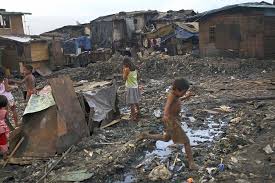
Urban life is the cornerstone of modern human ecology.
Over the previous centuries, cities have grown and expanded quickly throughout
the world. Cities are sources of jobs and education and are the motors of
economic growth. They are, however, also sources of environmental poverty,
inequality, and health hazards. Environmental decline in a town is triggered
primarily by fast urbanization and inconsistency in housing and infrastructure
provision and maintenance. These include lead exposure, air pollution, road
dangers, and amplification of heat waves by "urban thermal island." As
the amount of urban customers and their material expectations increase and the
use of fossil fuels increases, towns lead to widespread biosphere stresses
including climate change. This article will introduce and analyze environmental
issues of slum and informal settlements in India.
Keywords: Keystone, ecology, Employment,
Economic growth, poverty, Environmental decay, rapid urbanization, urban heat
island, informal settlement, etc.
VOL- 4, ISSUE- 4, PUNE RESEARCH TIMES (ISSN 2456-0960) JIF 3.18
4.4.6 TIMES
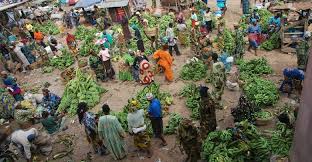
In India, there are four systems of
agricultural marketing like sale in village, sale in mandi, sale in market and
cooperative marketing. In agricultural marketing transportation cost,
inadequate market infrastructure, lack of market information, lack of
processing units, storage facility, price fluctuation are the major problems.
Eliminating middlemen, enough storage facility, freedom from moneylenders,
adequate transportation facilities, availability of loan and training
facilities etc. are required for satisfactory agricultural marketing. Some
people have suggested that crop insurance and technical guidance should be
provided for improvement in agricultural marketing in India. Among all these
problems, transportation charges are concerned as a major problem by the
maximum number of farmers.
VOL- 4, ISSUE- 4, PUNE RESEARCH TIMES (ISSN 2456-0960) JIF 3.18
4.4.7 TIMES
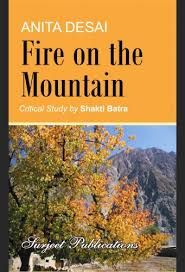
This article observes one of the most popular
characters in the Indian English Literature namely Nanda Kaul which has been
portrayed by Desai brilliantly in her novel Fire on the Mountains. The concept
of alienation and the issue of existentialism have been skilfully employed by
the novelist in this novel. As far as Anita Desai’s heroines are concerned Kaul
is the oldest. She has the conflict in her mind because of her desire to live
alone. However, the world around her never leaves her alone. The central
character Nanda Kaul is shown having some self-alienating characteristics that
lead her towards self-destructives. So, the zeal for the calmness and peace of
mind leads her to the loss of self-identity, depersonalisation and mental
trauma. However, the character of Nanda call is one of the most alienated,
self-destructive and mentally disturbed characters of Indian English
literature.
Key words: Alienated, Mentally disturbed,
Carignano, Detachment and Attachment, Society, Situation.
VOL- 4, ISSUE- 4, PUNE RESEARCH TIMES (ISSN 2456-0960) JIF 3.18
4.4.8 TIMES
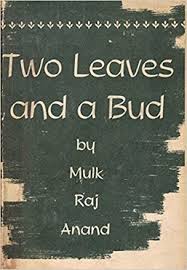
In this paper, we want to deal with
the novel Two Leaves and a Bud with regard to the sufferings and misery of the
workers of tea plantations of Assam. This novel can be considered as a dramatic
novel. The exploitation of the poor Indians and the injustice to them are
common feature in most of his novels. He also exposes the pain, plight and the
misery of these poor people who cannot do anything about it. The condition of
women in the pre-independence era has also been described by Anand in this
novel. The women in the novel are mostly working women at the tea-plantations.
Most of them are the sex-objects for the masters. This novel has everything
which makes it a great novel. Anand tries to include the elements of social
criticism as the exploitation of the poor working class is very innocent and it
can be fooled by anyone Thus, the elements of exploitation injustice and
corruption are beautifully discussed by Anand in this novel.
Key words:
Exploitation, Injustice, Corruption, Tea-plantation workers, Working women,
Assam.
VOL- 4, ISSUE- 4, PUNE RESEARCH TIMES (ISSN 2456-0960) JIF 3.18
4.4.1 टाईम्स

ख्रिस्ती
धर्मात काळानुसार धर्मप्रचाराची साधने जरी बदलत गेली तरी त्याच्या मुख्य उद्देश
बदलला नाही तो म्हणजे दिन दुबळ्या लोकांची सेवा करून ख्रिस्ताच्या संदेश देने,ख्रिस्ती
धर्म हा मानवतावादी धर्म असून तो पवित्र शास्त्र आणि पवित्र आत्म्याच्या
मार्गदर्शनाच्या सानिध्यात वावरत आणि चालत असतो,मिशनरी
चळवळ खऱ्या अर्थाने ख्रिस्ताच्या संदेश जनसामान्य लोकांपर्यंत पोहोचावी म्हणून
आपले सर्वस्व वेचून अनेक मिशनरी आपला देश,
प्रदेश,वंश,समाज,संपत्ती
आणि परिवाराला सोडून दुसऱ्या देशात जिथे गरीब आणि गरजवंत लोक आहे तेथे गेले,आणि
आरोग्य शिक्षण आणि सामाजिक सुधारणांचा माध्यमातून सुवार्ता प्रचाराची अनेक केंद्रे
खोलून ख्रिस्ती धर्मतत्वांना रुजविण्याचे महत्वपूर्ण कार्य केले,हे
करत असताना त्या देशातील संस्कृती,परंपरा,आणि
धर्माला तडा न देता त्यांनी सामान्य लोकांना जबरजस्तीने नाही तर स्वखुशीने निर्णय
लोकांना घेऊ दिले.त्याच्या परिणाम अनेक देशात ख्रिस्ती मिशनरी चळवळीचे संजीवन आले.आणि
स्थानिक मंडळीचा उदय होऊन टी मंडळी विकास पावली.आज जगाचा प्रत्येक कानोकोऱ्यात
ख्रिस्ताची सुवार्ता पोहचत असून अनेक मिशनरी आणि मिशनरी संस्था ख्रीस्तासाठी समर्पित आहे.
VOL- 4, ISSUE- 4, PUNE RESEARCH TIMES (ISSN 2456-0960) JIF 3.18
4.4.2 टाईम्स

आधुनिक युगात सर्व विकसित, विकसनशील व अविकसित देशात वाणिज्य शिक्षणाची नितांत आवश्यकता आहे. वाणिज्य शिक्षण ही शिक्षणाची अशी शाखा आहे की, जी वाणिज्य, व्यापार आणि उद्योग यांना यशस्वीपणे हाताळण्याकरिता विद्यार्थ्यामध्ये ज्ञान, कौशल्य व प्रवृत्ती वाढीस लावण्यात मदत करते. वाणिज्य शिक्षण हि प्रचलीत असलेली पण इतर शाखेपेक्षा निराळी शाखा आहे. म्हणून या शाखेने राष्ट्राच्या इच्छा आकांक्षानुसार कार्य करण्याकरिता नवीन मार्गाचा अवलंब करणे आवश्यक आहे. वाणिज्य शिक्षणामुळे व्यापार, व्यवसाय, सेवा क्षेत्र, बँकिंग क्षेत्र, विपणन क्षेत्र ई. मध्ये क्रांतीकारक बदल झाले आहेत. पण काही कारणास्तव काही समस्या निर्माण होतात, त्या का होतात व त्या कश्या दूर करता येईल याच्या अध्ययनाकरिता हा पेपर लिहण्यात आला आहे.
मूळशब्द:- व्यापार, वाणिज्य, ज्ञान, कौशल्य.
VOL- 4, ISSUE- 4, PUNE RESEARCH TIMES (ISSN 2456-0960) JIF 3.18
4.4.3 टाईम्स
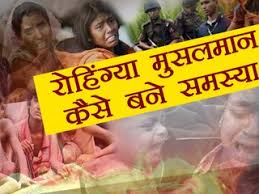
jesefnbiÙee cegefmueceeW keâer pees mecemÙee cÙeeveceej ceW efoKeeF& osleer nw Gmekeâe mJe¤he nceW yeenj kesâ ueesie Deewj cÙeeveceej kesâ mLeeefvekeâ ueesieeW kesâ yeerÛe keâe mebIe<e& efoKelee nw~ hej jesefnbiÙee cegefmueceeW keâer mecemÙee Fleveer mejue keâYeer Yeer veneR Leer~ Fme mecemÙee keâer lejheâ `mLeeefvekeâ ’Deewj `yeenj Jeeues’ keâe mebIe<e& Fme Âef° mes osKevee ieuele nesiee~ JeemleefJekeâ heefjefmLeefle ceW efheÚues leerve MelekeâeW mes jesefnbiÙee cÙeeveceej ceW jn jns nw~ hejbleg cÙeeveceej keâer mejkeâejves efheâj Jen ueeskeâleebef$ekeâ Meemeve ØeCeeueer keâer Meemeve JÙeJemLee nes Ùee ue<keâjer meòee, GvneWves jesefnbiÙee cegefmueceeW keâes veeieefjkeâlJe kesâ DeefOekeâej mes JebefÛele jKee Deewj Gvekeâes `yeenj Jeeues’ Ieesef<ele efkeâÙee~ GvnW je°^ kesâ cegKÙe ØeJeen mes oj-efkeâveej keâj efoÙee ieÙee~ jesefnbiÙee cegefmueceeW keâe mecetn ceW ye[er leeoeo ceW mLeeefÙekeâ nw~ hej Gvekeâer DeefOekeâebMe pevemebKÙee DelÙeble oerve-nerve heefjefmLeefle ceW iegpej-yemej keâjleer nw~ Fme efveyebOe kesâ ceeOÙece mes jesefnbiÙee cegefmueceeW keâer heefjefmLeefle kewâmeer nw? jesefnbiÙee cegefmueceeW keâer mecemÙee keâe mJe¤he keäÙee nw? yeewæ Deewj jesefnbiÙee kesâ yeerÛe mebIe<e& keâe cetue keâejCe keäÙee nw? jesefnbiÙee cegefmueceeW keâer lelkeâeefueve heefjefmLeefle kesâ efueS keâe Deeboesueve keâneB lekeâ efpeccesoej nw? jesefnbiÙee kesâ Øeefle cÙeeveceej mejkeâej keâer Yetefcekeâe keäÙee jner nw? Fve ØeMveeW keâes keWâõ ceW jKe keâj Gvekesâ Gòej {tB{ves keâer keâesefMeMe keâer ieÙeer nw~
VOL- 4, ISSUE- 4, PUNE RESEARCH TIMES (ISSN 2456-0960) JIF 3.18
4.4.4 टाईम्स
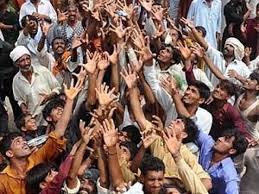
ns’k esa vusd iz;Ruksa ds ckotwn xjhch fo|eku gS A
xjhch dks xjhch js[kk dh lhek ls uhps thou;kiu djus okys yksxks dks vR;ar xjhc
ekuk x;k gS A xjhch js[kk vk; ds ml Lrj dks dgrs gS A ftlesa de vkenuh ds dkj.k
O;fDr viuh vfFkZd t#jrksa dks iwjk djus esa vleFkZ gksrk gS A fo’o cWad ds
vuqlkj 32-71 izfr'kr yksx xjhch js[kk ds uhps jgrs gS] ljdkj dh vkSj ls ;kstuk
¼uhfr½ vk;ksx }kjk xjhch js[kk dks ifjHkkf”kr fd;k tkrk gS A blds fy, fofHkUu
le;ksa esa vyx vyx lfefr;ksa dk xBu fd;k gS A 1½ fujis{k xjhch 2½ lkis{k xjhch-
Hkkjr esa lcls xjhch jkT; mMhlk gS A ljdkjh iz;Ruksa ds dkj.k xjhch de gqbZ gS
vkSj nkok ;g gS fd o”kZ 2005&2006 ls 2015&2016 bl n’kd esa 271 fefy;u
yksx xjhch js[kk ls ckgj fudys gS A fdarw vHkh vkSj vf/kd xaHkhj iz;Ruksa dh
vko’;drk gS A
ewy 'kCn % xjhch js[kk] lkis{k xjhch] fujis{k xjhch] xjhch mUewyu]
dSyksjh] vk;-
VOL- 4, ISSUE- 4, PUNE RESEARCH TIMES (ISSN 2456-0960) JIF 3.18
4.4.5 टाईम्स
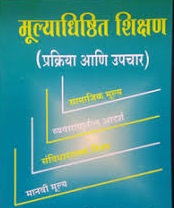
Hkkjrh; f”k{k.k iz.kkyhyk ,d Js’B ijaijk
vkgs- Hkkjrh; f'k{k.k i)rhr ekuokP;k
vk/;kfRed fodklkojp y{k dsafær dj.;kr vkys gksrs- xq:&f”k’; ijaijsP;k ek/;ekrwu ;kps ogu
gksr vls- vkJe i)rh Eg.kts vkiY;k
Hkkjrh; f”k{k.k i)rhps ,d izeq[k oSf”k’Vî gksrs- osndkGkiklwu vkiY;k vkpk;kZtoG clwu izR;{k
R;kaP;k”kh gks.kkÚ;k laHkk’k.kkrwu vkf.k R;kuarj R;kauh lq=:ikus lkafxrysY;k
KkukP;k fparukrwu ;k HkkjrHkwfer ,d Js’B v”kk f”k{k.k iz.kkyhpk fodkl >kyk-